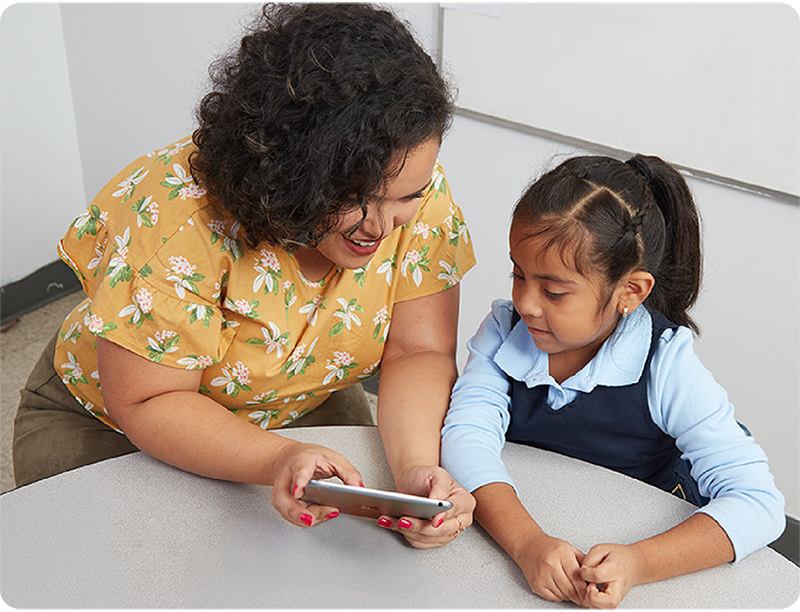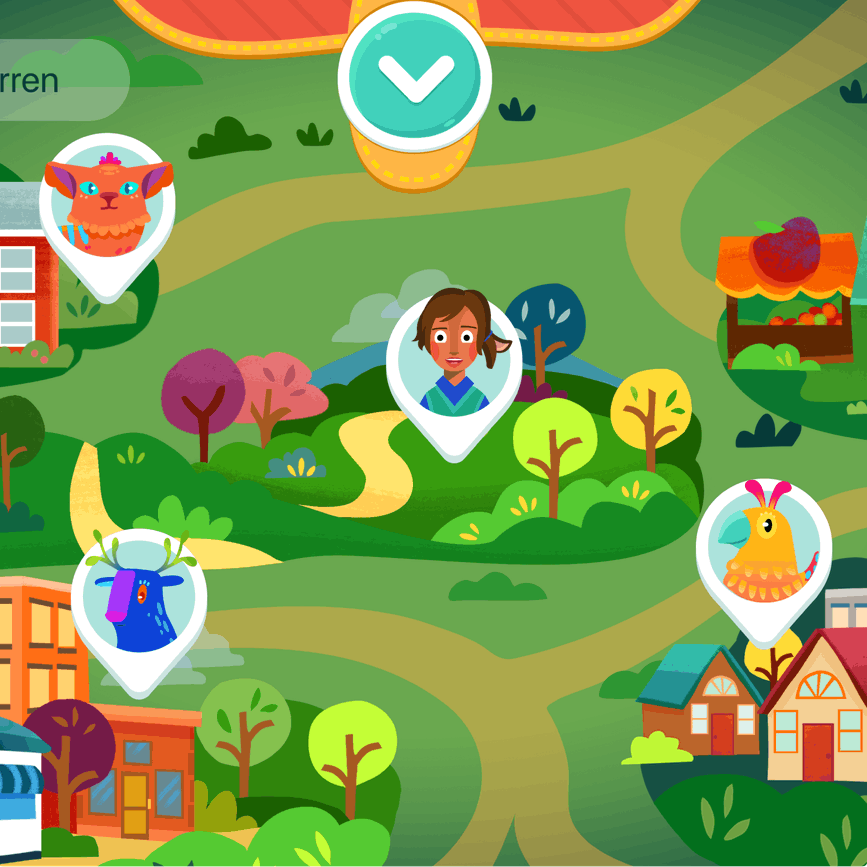
Amplify’s end-of-year research brief for 2024–25 shows that the youngest learners have made the greatest progress with foundational reading skills in the last five years: more kindergarteners, first graders, and second graders are on track to learn to read and fewer are far behind than at any time since the pandemic.
Kindergarteners made the biggest strides in the knowledge and skills measured by elementary reading assessments, with 70% on track to learn to read—a 21-point improvement since the pandemic.
Post-pandemic slide
In 2020–21 (the year students returned to school after the pandemic shutdowns), only 55% of K–2 students were on track to learn to read by the end of the year.
The youngest cohort struggled the most, with only 49% of kindergarteners at or above benchmark.
More students on track to learn to read
But by the end of the 2024–25 school year, the overall picture of reading readiness was much brighter.
Our data shows a 13-point increase, with 68% of the youngest readers at or above benchmark.
First and second graders were also far ahead of where they were five years ago, with improvements of 14 and 8 points, respectively.
Progress slowing
While our 2024–25 end-of-year early reading data shows significant progress relative to 2020-21, the picture is less rosy when we compare it to last year:
- Overall, the number of K–2 students at or above literacy benchmarks was only one percentage point higher at the end of 2024–25 than it was at the end of the previous school year.
- Within that cohort, both kindergarten and first graders saw a 2% increase, but second graders only saw a 1% increase.
Fewer students far behind
Similarly, our data showed a significant drop in the number of young readers well below benchmark between the post-pandemic school year and the 2024–25 school year.
- Kindergarteners, again, showed the most improvement, with the number of students far behind dropping from 38% in 2020–21 to 20% at the end of the 2024–25 school year.
- Among first graders, we saw a 12-point decline in students who were not on track to learn to read compared to 2020–21
- Second graders showed the least improvement, with a decline of six percentage points relative to 2020-21.
Improvements among this cohort followed a similar trend to those of the at-benchmark readers: a noticeable decline over five years, but a barely noticeable year-over-year improvement.
- Only 1% fewer students across K–2 were far behind at the end of this year compared to the year before.
More improvement during the school year
Our data also revealed some good news about annual progress in early literacy development:
- Across K–2, students showed a bigger improvement in reading readiness than they did in prior years.
- By the end of the 2024–25 school year, 70% of kindergarten students were on track to learn to read, compared to 36% at the beginning of the year (the greatest improvement since 2020–21).
- First graders had a 19% improvement by the end of the 2024–25 school year (70% on track by end of year) compared to 56% in 2021.
- Second graders showed an 11-point increase in reading readiness from beginning to end of year (65% to 54%).
Putting the Science of Reading to work for students
“Grades K–2 remain critical years for literacy development,” said Susan Lambert, Chief Academic Officer of elementary humanities at Amplify and host of Science of Reading: The Podcast. “To support young readers, educators need data-driven insights into student reading development and instructional practices that are based in the Science of Reading.”
Research has shown that data-driven strategies and tools provide the best support for young learners’ future academic success. Here are a few of the ways teachers, administrators, and parents can put them into practice:
- Administering elementary reading assessments three times a year, to monitor student risk level for reading challenges
- Supporting students at risk for not learning to read by analyzing data from reading assessments and making informed decisions
- Allocating extra classroom time and resources to help students who aren’t on track
- Monitoring progress and making adjustments as needed
- Ensuring that evidence-based reading instruction is offered at every grade level
- Instilling a love of reading in and out of school, in partnership with caregivers and community
Let’s keep the conversation going! Join the discussion in our Amplify learning communities.
Dive into the findings in our End-of-Year Report.


